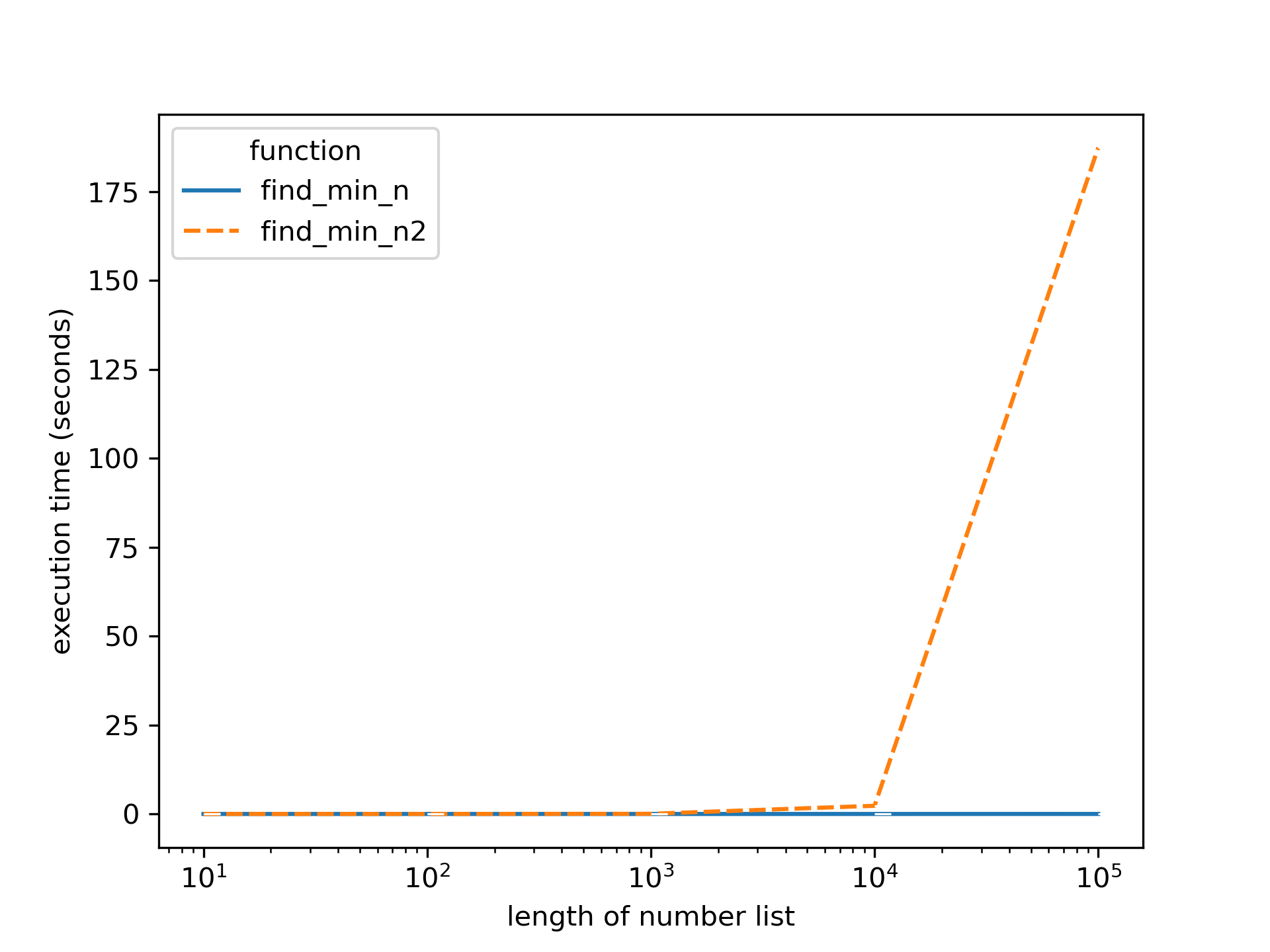
The Python code for the functions, unit tests, comparisons, as well as the data in csv format and image can be found in this link to the code.
# find_min_n.py
import math
def find_min_n(numberList):
"""
Find the minimum number in a list of numbers
Keyword arguments:
numberList -- the list of numbers
Returns:
min -- the minimum number from numberList
"""
min = math.inf
for number in numberList:
if number < min:
min = number
return min
This function is O(n) because it loops through all of the elements in the
array once.
# find_min_n2.py
import math
def find_min_n2(numberList):
"""
Find the minimum number in a list of numbers.
Keyword arguments:
numberList -- the list of numbers
Returns:
min -- the minimum number from numberList
"""
min = math.inf
# Loop through every number
for number1 in numberList:
is_min = True
# Compare number1 with every other number in numberList
for number2 in numberList:
# If number1 is larger than any other number, then it's not min
if number1 > number2:
is_min = False
# If the minimum number is found, return
if is_min == True:
min = number1
return min
return min
This function is O(n^2) because of the nested loop.
Here's a plot of the execution time:

Links to the resources I used can be found here:
https://runestone.academy/runestone/books/published/pythonds/AlgorithmAnalysis/BigONotation.html